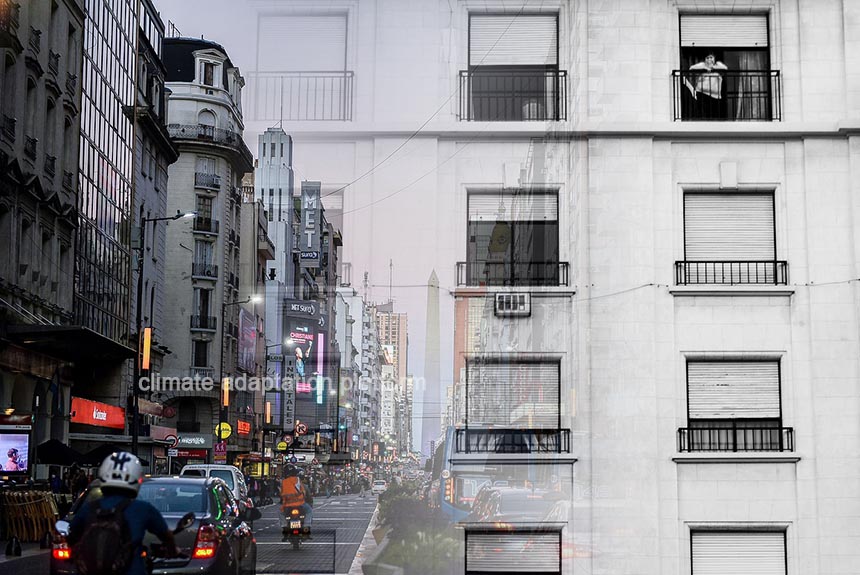Buenos Aires is a city of contrasts. While it is rich in cultural life and home to one of the world’s best opera houses and most beautiful bookstores, it also lacks affordable housing, particularly in the metropolitan area, which contributed to the proliferation of informal settlements that have been growing over the years.
According to World Bank data, the metropolis is home to around 40% of the informal settlers in the country, and 25% of the city’s residents live in poverty (Puig & Lynch, 2019).
Unaffordable housing in Argentina resulted from neoliberal policies in the 1990s. Argentina underwent a wave of privatisation, which significantly impacted the country’s infrastructure and social fabric. These policies particularly affected housing, leading to a lack of access to affordable housing and a rise in informal settlements. New developments, skyscrapers, and more traditional architecture have grown alongside informal settlements on the city’s outskirts, but in some cases, right next to the downtown area (Buenos Aires, n.d.).
One of these informal villas is Rodrigo Bueno in Buenos Aires. It is located in one of the most expensive lands in the city, on an ecological park in the shadow of the city’s financial district. No wonder that for decades, residents here have faced consistent threats of eviction. However, residents have always found ways to block eviction.
Also, a common feature of informal settlements is their vulnerability to climate change impacts like floods and extreme heat due to poor infrastructure, high population and structural density, lack of ventilation, and proximity to the flood-prone canal.
WRI reports that in 2016, a new city administration dropped the legal battles over eviction and adopted a new strategy to address Rodrigo Bueno’s challenges: partnership and shared decision-making with the residents.
The results have been revolutionary for the city and, in a way, a win for the informal settlers who have united and, through decades, displayed strong determination to stay. Instead of imposing eviction, the government has worked with the community to implement a new urbanisation plan to upgrade the informal homes into blocked apartments.
Buenos Aires’s Housing Institute appointed a “Territorial Team” comprised of social workers, anthropologists, and architects who spent time in Rodrigo Bueno to learn about the residents’ changes to a model of collaboration with the informal community.
The team’s 8 years of ongoing engagement with the community have fostered trust and produced the following outcomes: a new law that formally recognised Rodrigo Bueno residents’ land and home ownership; following this law, a new street system was installed, and residents received home addresses, businesses could appear on maps, and emergency services could reach residents.
The new street grid and 611 energy-efficient, multi-family housing units with solar-powered water heating systems were constructed and offered to residents. Residents were also provided the option of staying in their old house or buying a new housing unit. Mortgage prices for these new homes are also based on residents’ incomes. Existing structures also receive structural, aesthetic, and infrastructure upgrades.
Those whose homes were too close to the canal edge were allowed to swap with another resident who elected to move into a new building.
In 2022, the Housing Institute began remediation work on the canal on one side of the settlement. It also installed a stormwater control system and retaining wall to reduce flooding. The Housing Institute also led various skills and training workshops for residents. One of them was a three-month workshop on gardening and agriculture, which led to the creation of the La Vivera Organica plant nursery in 2019. The nursery has provided fresh local food to the community and supplied organic produce to some businesses in the city.
The Housing Institute’s success in transforming and integrating the informal settlements into the city and helping them boost their climate resilience can provide a template for many cities worldwide while grappling with the same problem. An estimated 1.2 billion urban dwellers lack access to secure and affordable housing.
Watch the WRI video to see how Rodrigo Bueno’s transformation and integration into the city have impacted the lives of its residents.
Sources:
Buenos Aires. (n.d.) Unequal Scenes. Retrieved from https://unequalscenes.com/buenos-aires
Shin, J. & Kustar, A. (2024 August 15). Empowering Residents Helped Buenos Aires Transform Rodrigo Bueno Into a Climate-Resilient Community. Retrieved from https://www.wri.org/insights/rodrigo-bueno-buenos-aires-climate-resilient-community?
Puig, B. & Lynch, C. (2019, June 19). A city of contrasts, Buenos Aires works to integrate informal settlements. World Bank Blogs. Retrieved from https://blogs.worldbank.org/en/latinamerica/city-contrasts-buenos-aires-works-integrate-informal-settlements



Leave a Reply